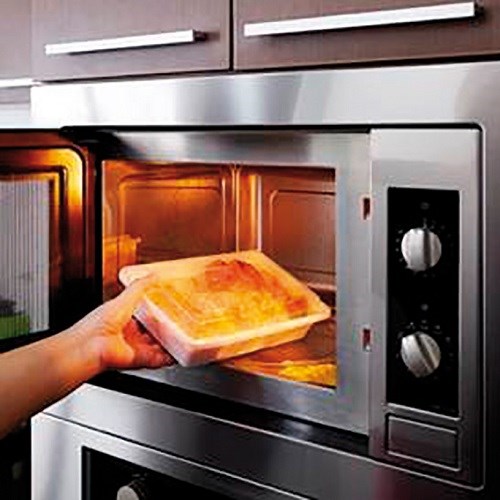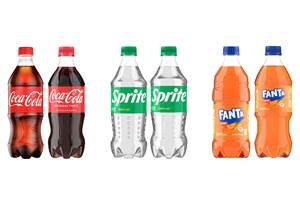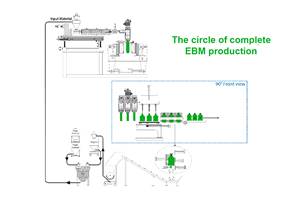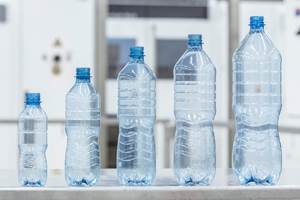In-Situ Nucleated PP Rivals Conventional Nucleation
A technology that produces a nucleating effect during the polymerization of PP boasts numerous advantages over adding a nucleating agent during pelletization.

A new technology for polypropylene nucleation just might be a game changer. We were recently contacted by , the joint venture between Abu Dhabi National Oil Company (ADNOC) and Austria’s regarding this apparently breakthrough technology.
Since its founding in 1998, Borouge has become a leading innovative polyolefins supplier serving plastics processors in 50 countries across the Middle East, Asia, and Africa. Daniel Van Houcke, lead application development engineer, explains that the new nucleated PP is based on the Borstar Nucleation Technology (BNT) which was developed with the help of their new Borouge Innovation Center in Abu Dhabi.
What should be of particular interest to PP injection molding processors is that the nucleating effect of BNT is obtained in the polymerization reactor (in situ), and boasts numerous advantages over the standard approach of adding a nucleating agent during pelletization. These include: a robust and consistent nucleation effect; higher and faster crystallization temperature; inertness and low taste and odor; and, reduced impact of colors or shrinkage of the material.
Borouge has launched the first BNT-based grade--fully compliant with food-contact regulations BorPure HJ311MO--for use in such applications as confectionary packaging, microwaveable containers, take-out food containers, media cases, and houseware containers. Field tests comparing this material to a conventionally nucleated PP grade showed the following significant benefits for processors and/or end users:
• >10% improvement in flow leading to better processability
• >10% reduction in cycle time—mainly through reduction of cooling time and easier demolding due to faster crystallization
• >10% reduction in processing temperatures leading to lower energy consumption
• >10% improvement in Charpy impact performance
• Significant improvement in organoleptics (taste and odor)
• Less breakage (waste) due to enhanced impact
• Microwaveable and reusable
A lower carbon footprint is also claimed for the new PP achieved by cycle time and energy reduction. “With the drive for sustainable innovation supported by proprietary Borstar technology and our advanced research capabilities, Borouge is committed to add value to life by shaping the plastic materials of the future,” says product development manager Balakantha Rao Kona.
According to Kona, the new Innnovation Center serves as a focal point for innovation in the polymer development and application technology. With over 70 professionals and technicians from 20 different countries, the Center is designed to provide value-added plastics for customers worldwide, focusing on the infrastructure, automotive, and advanced packaging industries. This investment includes extensive laboratory and application pilot resources. Product development focuses on high-performance, cost-effective, and differentiated polymer solutions that ensure the success of Borouge customers throughout the value chain while also helping to address some of the major global sustainability challenges. The Borouge facility also collaborates with the European innovation centers of Borealis, local and international educational institutions, and many key industry players.
Initially, processors interested in the new BNT-nucleated PP can contact Kona at: Balakantha.Kona@borouge.com. The material, which is now being produced commercially and which has been tested at various processors with excellent feedback, according to Kona, can be expected to be made available in the near future via Borealis (U.S. office is in Port Murray, N.J.).
Want to find or compare materials data for different resins, grades, or suppliers? Check out Plastics Technology’s Plaspec Global materials database.

Related Content
Coca-Cola’s Redesign of Small PET Bottles Pushes Lightweighting Below Prior ‘Floor’
Coca-Cola thought it had reached the limits of lightweighting for its small PET carbonated soft drink bottles. But a “complete redesign” led to a further 12% reduction.
Read MoreGet Color Changes Right In Extrusion Blow Molding
Follow these best practices to minimize loss of time, material and labor during color changes in molding containers from bottles to jerrycans. The authors explore what this means for each step of the process, from raw-material infeed to handling and reprocessing tails and trim.
Read MoreFirst Water Bottles With Ultrathin Glass Coating
Long used for sensitive juices and carbonated soft drinks, KHS Freshsafe PET Plasmax vapor-deposited glass coating is now providing freshness and flavor protection for PET mineral water bottles.
Read MoreBreaking the Barrier: An Emerging Force in 9-Layer Film Packaging
Hamilton Plastics taps into its 30-plus years of know-how in high-barrier films by bringing novel, custom-engineered, nine-layer structures resulting from the investment in two new lines.
Read MoreRead Next
Beyond Prototypes: 8 Ways the Plastics Industry Is Using 3D Printing
Plastics processors are finding applications for 3D printing around the plant and across the supply chain. Here are 8 examples to look for at NPE2024.
Read MorePeople 4.0 – How to Get Buy-In from Your Staff for Industry 4.0 Systems
Implementing a production monitoring system as the foundation of a ‘smart factory’ is about integrating people with new technology as much as it is about integrating machines and computers. Here are tips from a company that has gone through the process.
Read MoreSee Recyclers Close the Loop on Trade Show Production Scrap at NPE2024
A collaboration between show organizer PLASTICS, recycler CPR and size reduction experts WEIMA and Conair recovered and recycled all production scrap at NPE2024.
Read More














